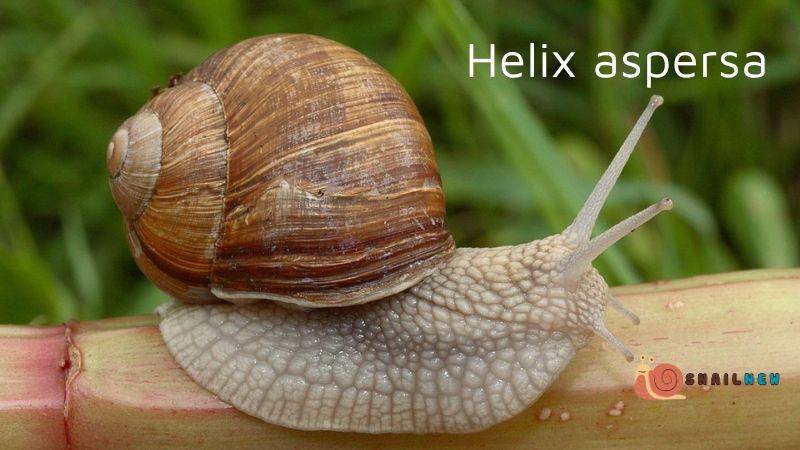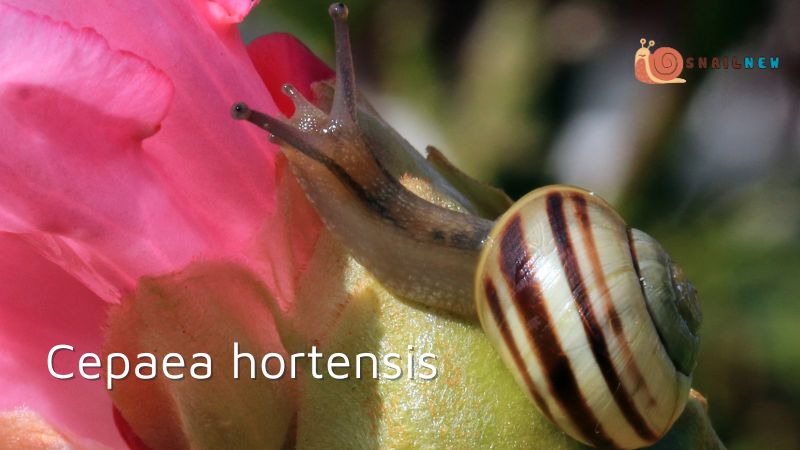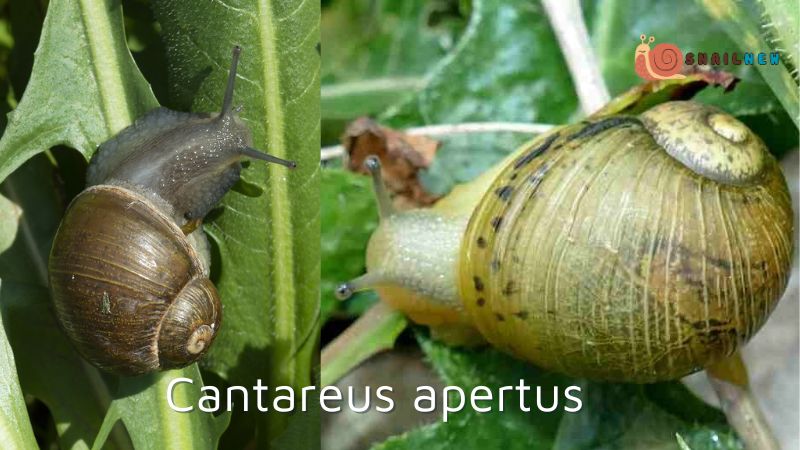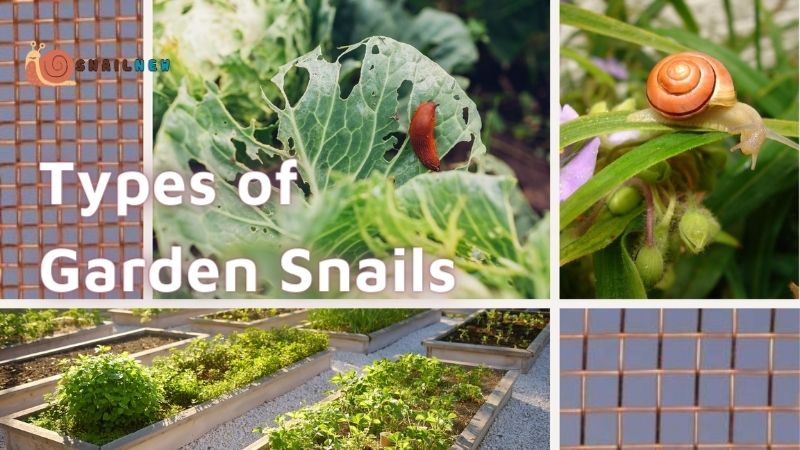Garden snails, with their delicate shells and slow, methodical movements, are a common sight in gardens around the world. They belong to a fascinating array of species, each with its own unique characteristics and habits. In this comprehensive guide, Snailnew will delve into the diverse types of garden snails, exploring their appearances, behaviors, and habitats.
Table of Contents
ToggleTypes of Garden Snails
- Helix aspersa (Common Garden Snail): Among the most ubiquitous types of garden snails is the Helix aspersa, commonly known as the Common Garden Snail. Recognizable by its conical shell adorned with brown or yellowish stripes, this species is a frequent visitor to gardens, where it feeds on a variety of plant matter.

- Cornu aspersum (formerly Helix aspersa): Another prevalent species in garden environments is the Cornu aspersum, formerly classified as Helix aspersa. Like its cousin, it boasts a similar appearance, with a spiral-shaped shell and a penchant for vegetation.
- Cepaea nemoralis (Grove Snail): The Cepaea nemoralis, or Grove Snail, stands out for its strikingly colorful shell, which can feature hues ranging from yellow and pink to brown, often adorned with distinctive bands. These snails add a vibrant touch to garden landscapes.
- Cepaea hortensis (White-lipped Snail): Distinguished by its white lip at the aperture of the shell, the Cepaea hortensis, or White-lipped Snail, shares the penchant for colorful shells with its close relative, Cepaea nemoralis. It is a common inhabitant of garden ecosystems.

- Arianta arbustorum (Copse Snail): Found both in woodland areas and gardens, the Arianta arbustorum, or Copse Snail, features shells that range in color from brown to reddish-brown. Their presence adds a touch of wilderness to garden environments.
- Cantareus apertus (Green Garden Snail): Sporting a distinctive greenish hue, the Cantareus apertus, or Green Garden Snail, is occasionally encountered in garden settings, although it is more commonly found in agricultural landscapes. Its unique coloration sets it apart from its counterparts.

Appearance and Characteristics
Types of garden snails exhibit a remarkable diversity in appearance and characteristics. While some species, like the Helix aspersa and Cornu aspersum, feature relatively plain shells with subtle markings, others, such as the Cepaea nemoralis and Cepaea hortensis, boast vibrant colors and intricate patterns.
These gastropods typically possess a soft body that is protected by their spiral-shaped shells. The shells themselves vary in size, shape, and texture, with some species having smoother surfaces while others display pronounced ridges or grooves.
One of the most fascinating aspects of garden snails is their ability to retract into their shells when threatened, using a muscular foot to seal the opening and protect themselves from harm. This unique defense mechanism is a key adaptation that has enabled snails to survive and thrive in diverse environments.
Behavior and Habitat
Types of garden snails exhibit a range of behaviors and habitat preferences. While some species are primarily nocturnal, venturing out under the cover of darkness to feed and explore, others are more active during the day, taking advantage of the sunlight to forage for food.
Garden snails are typically herbivorous, feeding on a variety of plant matter such as leaves, stems, and flowers. They play a crucial role in garden ecosystems by helping to break down organic matter and recycle nutrients, although they can also be considered pests when they consume crops and ornamental plants in large numbers.
These gastropods are adaptable creatures, capable of thriving in a wide range of habitats, from lush gardens and wooded areas to urban environments and agricultural fields. They are often found in moist, humid conditions, where they can remain hydrated and avoid desiccation.
Ecological Importance
Despite their small size, garden snails play an important role in the ecosystem. As decomposers, they help to break down organic matter, contributing to the nutrient cycling process. Additionally, they serve as prey for a variety of predators, including birds, rodents, and insects, forming an integral part of the food web.
In gardens, snails can also serve as indicators of environmental health, with their presence or absence reflecting the overall balance of the ecosystem. By observing the populations of different snail species, gardeners can gain valuable insights into the ecological dynamics of their gardens and make informed management decisions.
Sum Up
In sum up, the world of garden snails is rich and diverse, with a wide variety of species inhabiting gardens around the globe. From the common Helix aspersa to the colorful Cepaea nemoralis, these gastropods exhibit a fascinating array of appearances, behaviors, and habitats.
Understanding the different types of garden snails and their ecological roles is essential for gardeners and nature enthusiasts alike. By appreciating the diversity of these humble creatures, we can gain a deeper appreciation for the intricate web of life that exists in our gardens and beyond. So next time you encounter a garden snail, take a moment to marvel at the wonders of nature that surround us.
Related Posts:
- What Color Are Snails? Exploring the Colorful World…
- Exploring the Diverse Types of Sea Snails: A…
- Exploring the Pace of Nature: How Fast Are Snails?
- Exploring the Diverse Types of Nerite Snails: A…
- Is a Snail a Vertebrate? Understanding Animal Classification
- Do Snails Bite? Demystifying the Misconception


